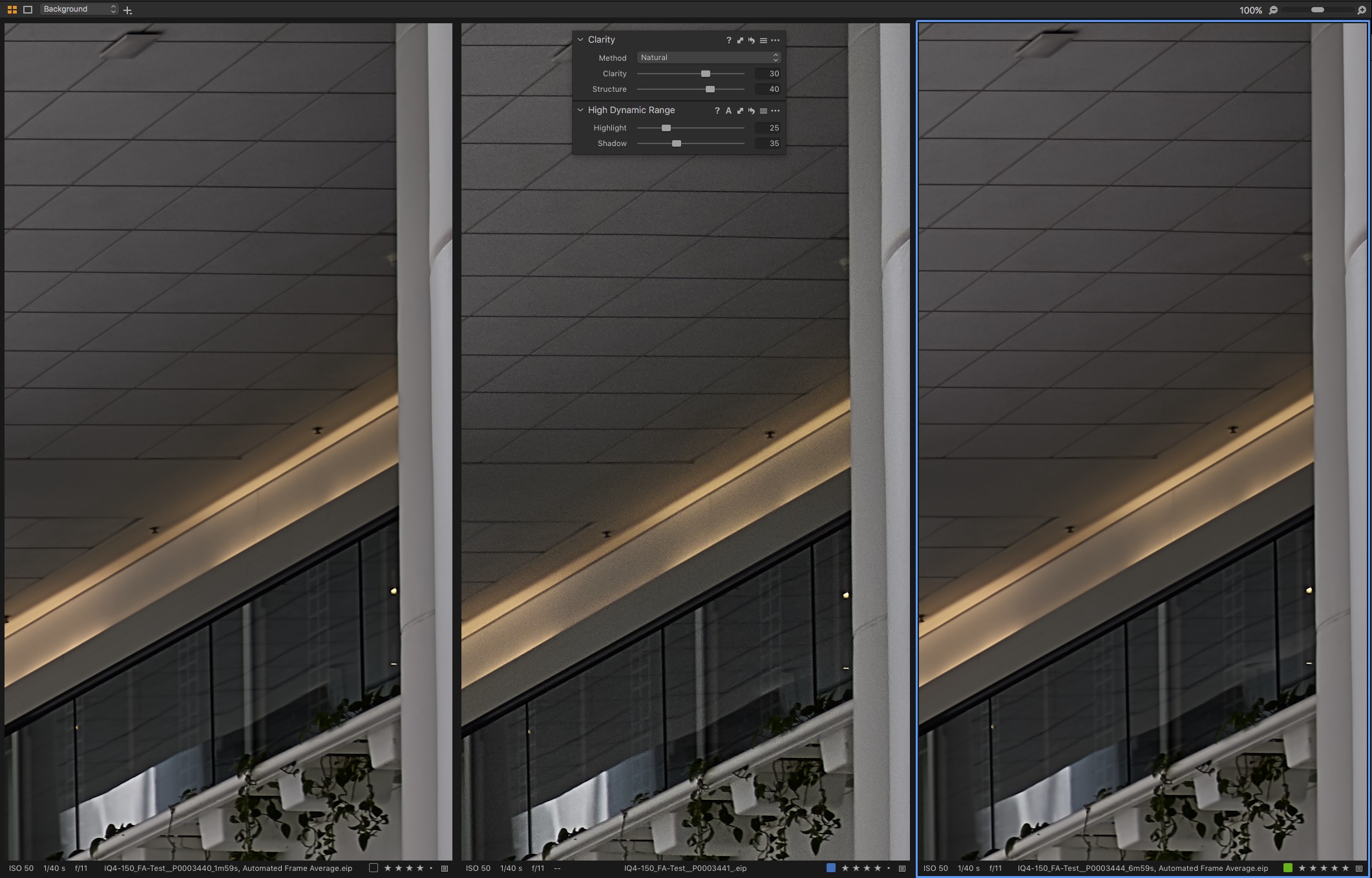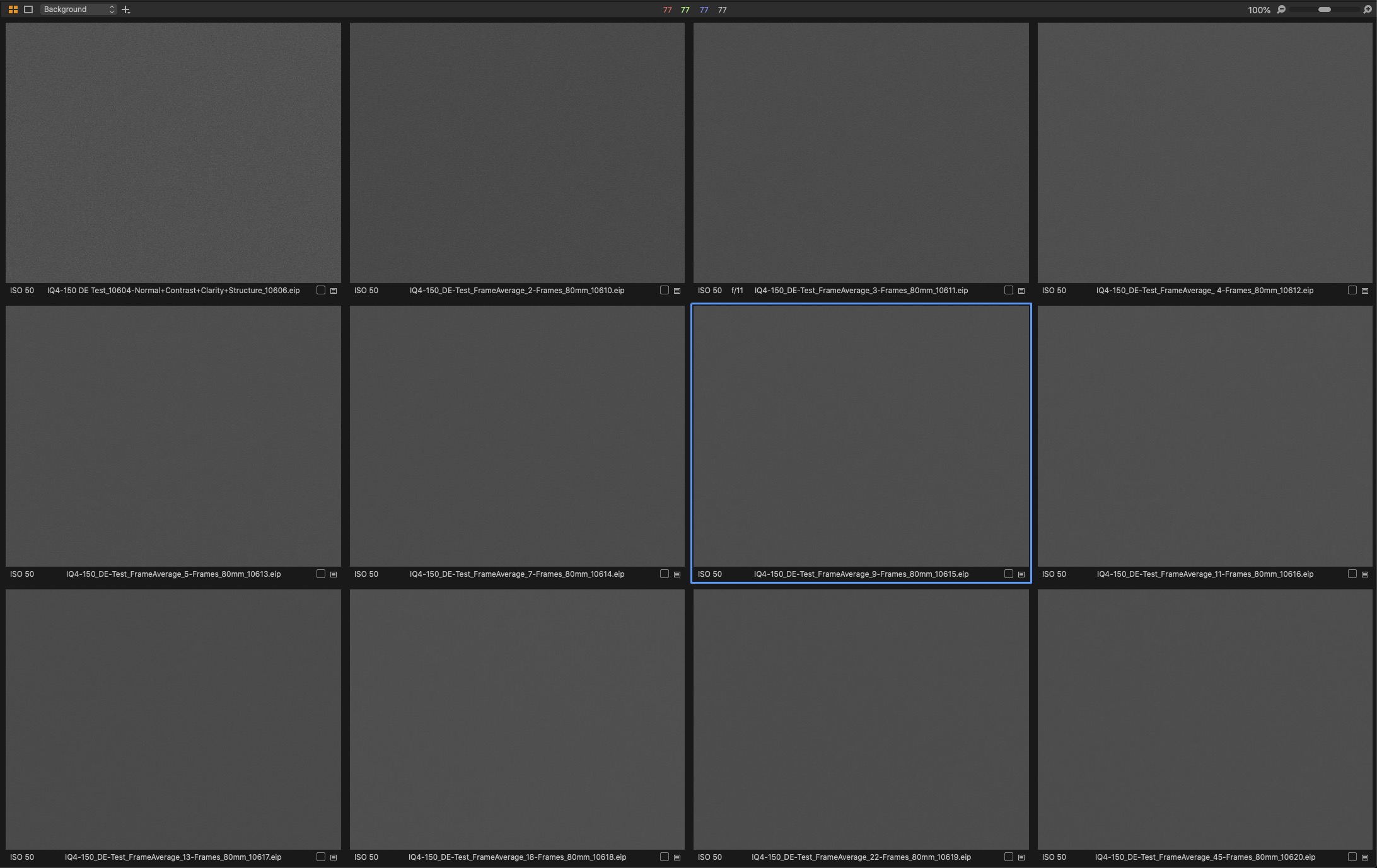It’s no secret that I’m an absolute fan of Frame Averaging on the IQ4-150, not just for creating mid-day motion blurs without Neutral Density, but for noise reduction captured images.

I now shoot a Frame Averaged base layer to every shot I do, whether it’s purely a natural light environment or a scene I’m about to light or paint with light. Having this base layer gives me wonderfully recoverable shadows and wondrously milky mid-tones all for only about 10x your set exposure time. I’ve found that if you’re using Frame Averaging just to clean up noise, somewhere around 9-10 frames is going to be the sweet spot for getting 90% of the work done.
As demonstrated in the following series of images shot through white plexiglass and enlarged to 400%, most of the grain pattern is reduced by the 9th frame and while improvements can still be seen as the number increases, going for those later images can cost time and because of that added time, can allow other negative variables to enter. In this case, my base exposure was 1/30th of a second so at 9 frames I was only up to a 2 second exposure, which for any still life scene you’re capturing is relatively no more time spent at the camera while receiving most of the benefits of the frame average. 
Play with it on your own and see what increment resolves the most benefit for you. -bk